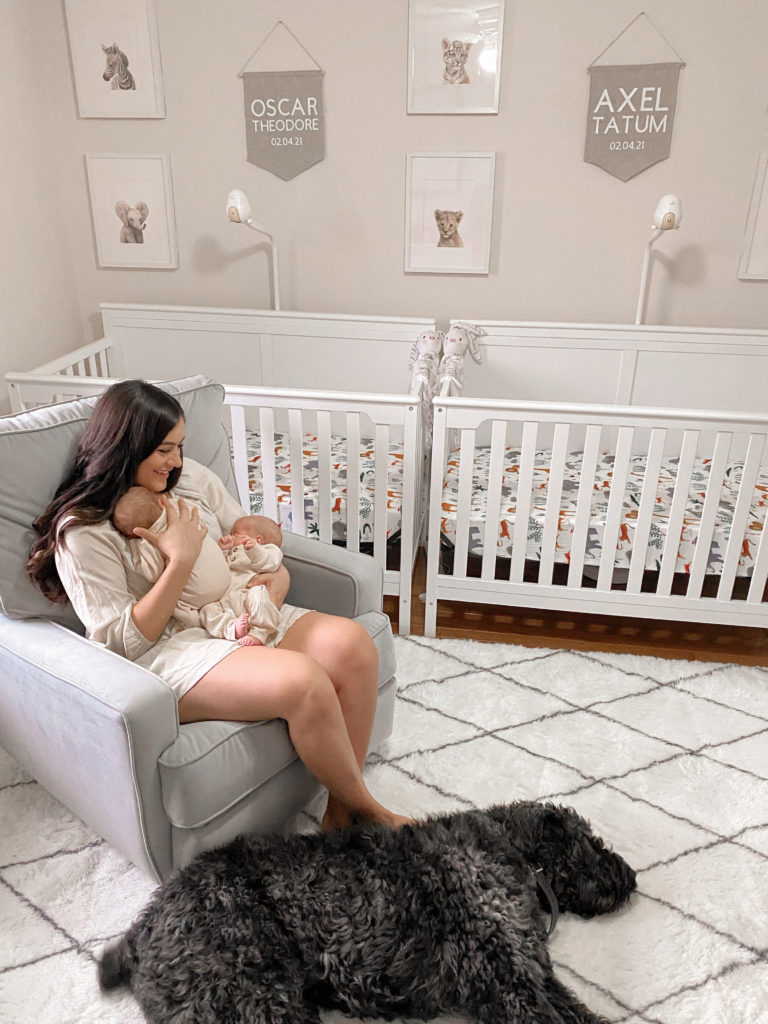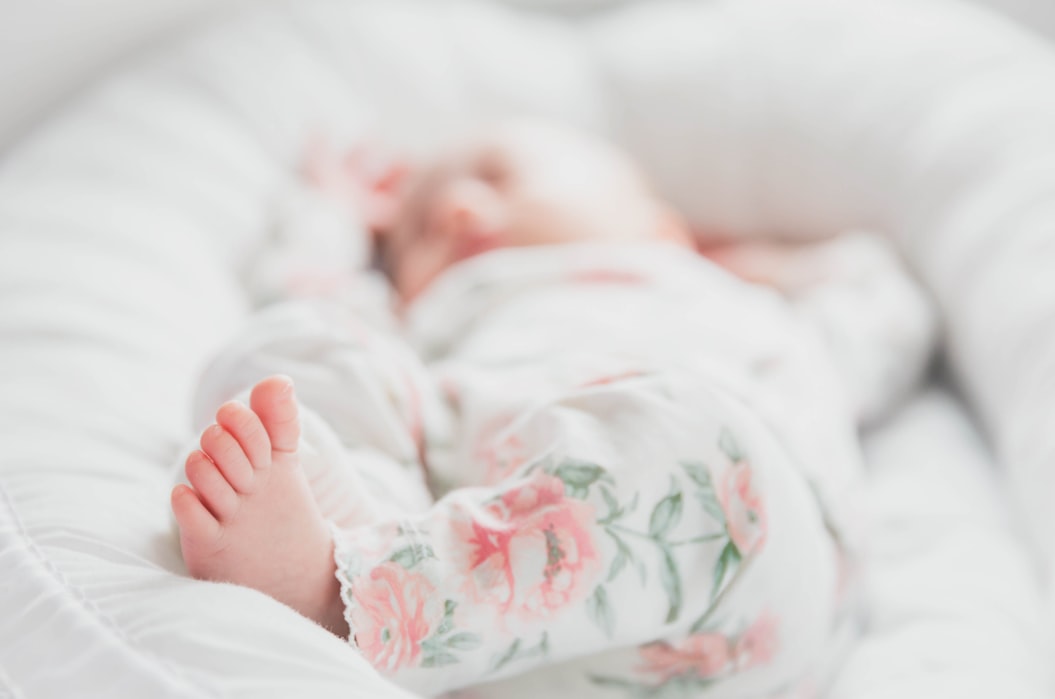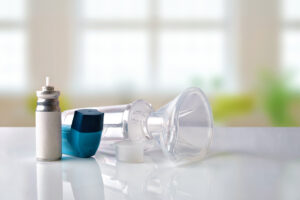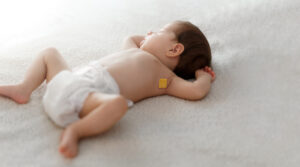Being the parent of a newborn can prompt you to do seemingly endless research about what toys, furniture, services, and products are best for your recent bundle of joy. The biggest concern for most mothers and fathers is the element of safety while choosing different items for their baby.
So, are bassinets safe for newborns or not? They sure are gaining popularity. Recently, the resurgence of bassinets as a go-to and suitable option for a baby’s sleeping area has brought along with it popular demand and increased interest from parents-to-be. The question of whether a bassinet is a safer alternative for your child over a traditional crib has come into focus, and people want answers.
Below are the top distinctions between a crib and a bassinet as well as the safety information that may be vital when it comes to choosing if a bassinet is right for your precious newborn.
About Bassinets
Bassinets offer comfortable and easily accessible (for the mother or father) sleeping accommodations for newborns between the ages of 1 to 5 months old. Because of the generally waist-level height of a bassinet in comparison to that of a parent or guardian, these beds may be ideal for parents who want easy access to their beloved baby.
Bassinets are especially great for women who have undergone a cesarean section instead of more natural birthing methods as the easy-to-reach baby in a bassinet induces less pain when lifting.
Modern bassinets also include other features that set them apart from other sleeping products for babies. Different colored lights, add-on toy modifications, smart rocking capabilities, and a plethora of color schemes and themes make this item a big contender when shopping around.
It is noted that bassinets are not a suitable bedding option for children that reach 22lbs or over. They become unsafe for children this big and more prone to cause issues.
Pros of a bassinet
- Placing your baby in and out of it is a simple and safe process.
- Great for modest living quarters with an emphasis on saving space.
- Affordable and reasonably priced allows for a cost-cutting option when you need it most.
- Lighter and less heavy than cribs, increasing mobility when changing up rooms.
- Higher mobility means you can take the bassinet in the car or on the go without moving your baby.
- Coziness and womb-like sleeping areas for newborns transitioning into new life.
Cons of a Bassinet
- The lighter weight allows for easiness to tip over and can harm your child. More awareness and preventative safety guidelines are required in the house.
- The usability of the bassinet is much shorter as the baby will outgrow it more quickly than a crib.

credit: IG @arianajoychristie 
credit: IG @chloeandbeans
About Cribs
Cribs on the other hand are compact and small enclosed bedding options for babies and toddlers and are defined primarily by their high enclosed slated walls and sides. Cribs offer extra added security, as it is difficult for children to crawl over the sides of the enclosure even when they grow a little bigger. This makes cribs more suitable for children over the weight of 22lbs.
They also come in a few types and varieties. Here is a brief overview of the different variations:
- A conventional crib, with the traditional rectangular shape that’s easily assembled.
- A miniature crib, which is a little less than 50% the size of a conventional crib.
- Convertible cribs are more complex options but provide a modifiable element that allows you to change the size of the bed as your baby grows up and develops.
Pros of a crib
- Well-grounded and not easily tipped over when knocked into.
- Increased duration of usability can range from a few months to a few years.
- Accessories like new mattresses and attachments are widely available and easy to find.
- Differing themes, colors, design patterns, and customizations.
Cons of a crib
- Mobility is drastically reduced in comparison to a bassinet, as cribs are generally difficult to move around.
- The size of your living quarters or your child’s room needs to be big enough to support a crib.
- The methods of piecing together and assembling cribs are more involved and significantly more complex than a bassinet.

Bassinet Safety Standards
Are bassinets safe according to modern safety standards? There are many different resources that government agencies around the world have provided including up-to-date safety guidelines providing proper instruction for bassinets used in the home. Many of these different countries and regions offer similar but slightly different rules, so it’s important to know the difference depending on where you live or where you plan to move to.
Below is a more detailed description of safety standards and guidelines for bassinets in different regions of the world.
Crib & Bassinet Safety Precautions in the U.S.
Are bassinets safe for American standards and use? According to the Consumer Product Safety Commission (CSPC), bassinets can be safe if you:
- Prevent suffocation by limited thick blankets or pillows in the bassinet.
- Keep tight spaces and gaps between the mattresses and inside of the enclosure so a baby cannot get stuck.
- Follow all assembly instructions as accurately as possible, and routinely check the sturdiness of the sleeping area.
- Discard bassinets that are older than 10 years.
- Keep the bassinet away from any window or curtains with loose strings or cords.
Canada
Health Canada:
- Check the recalls and safety alerts database on your bassinet.
- All bassinets sold in Canada from second-hand stores and online reseller websites need to meet current safety regulations.
- Any bassinet that was manufactured before September 1986 should not be used as they don’t meet current safety standards.
- When in the market for a bassinet look for a model number, safety manual, date it was made, and all other indications of authentic and safe manufacturing procedures.
- For already-own bassinets, regularly changing worn-out mattresses, splintered or damaged frames, missing nuts or bolts, and other inconsistencies is strongly recommended.
- Place your bassinet away from any wires, cords, blinds, plugs, curtains, lamps, and doors.
Australia
According to Queensland Health, bassinet use in Australia should follow these guidelines:
- Keep the bassinet in the room with you while the baby is sleeping or awake inside it for 6 to 12 months after birth.
- Be aware that Australia does not legally require manufacturers of bassinets to make sure they meet specific safety guidelines.
- Bassinets are prone to tipping over because they are lightweight, so make sure it is stable and out of accident’s way.
- If your bassinet is on wheels, make sure that two out of four of the wheels are in the locked position when not moving.
- Look for sturdy construction and good ventilation using personal judgment with concern for your baby’s health in mind.
The U.K.
According to the United Kingdom’s National Health and Safety, when using bassinets for sleep you should:
- Make sure to identify if the product possesses the British Standard mark that reads BS EN 716-1
- All bedding and mattresses must fit tightly and comfortably into the enclosure to ensure a baby cannot get their head stuck in the crease.
- Make sure your baby is sleeping on their back and near a parent (for six months after birth) to provide adequate safety and comfort.

Tips For Choosing the Right Bassinet
For making the right choice in the perfect bassinet that suits your needs and the needs of your baby, there are a few things to mull over. Make sure that the bassinet you want to purchase is strong, stable, and won’t tip over too easily.
Check thoroughly for any areas in the bedding part of the bassinet where lack of ventilation and increased risk of suffocation can occur. Avoid any options that have these qualities.
Any purchased bassinets need to be bought certifiably new, so make sure the company you are buying one from is not a reseller of preowned units.
If anything looks like a potential hazard to your child’s safety, then by all means avoid purchasing the product. The bassinet you choose will end up being the go-to place of rest for your newborn, and making the wrong choice can have potentially terrible consequences.





